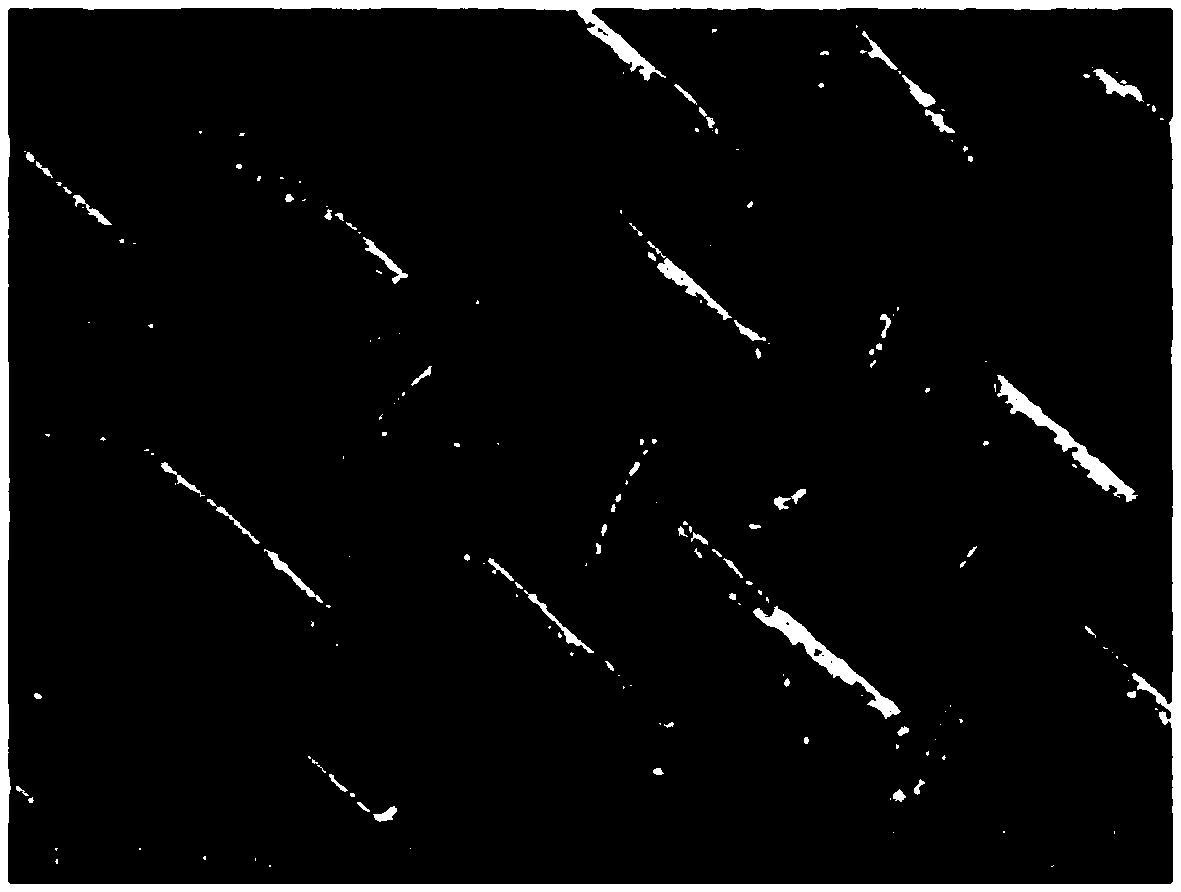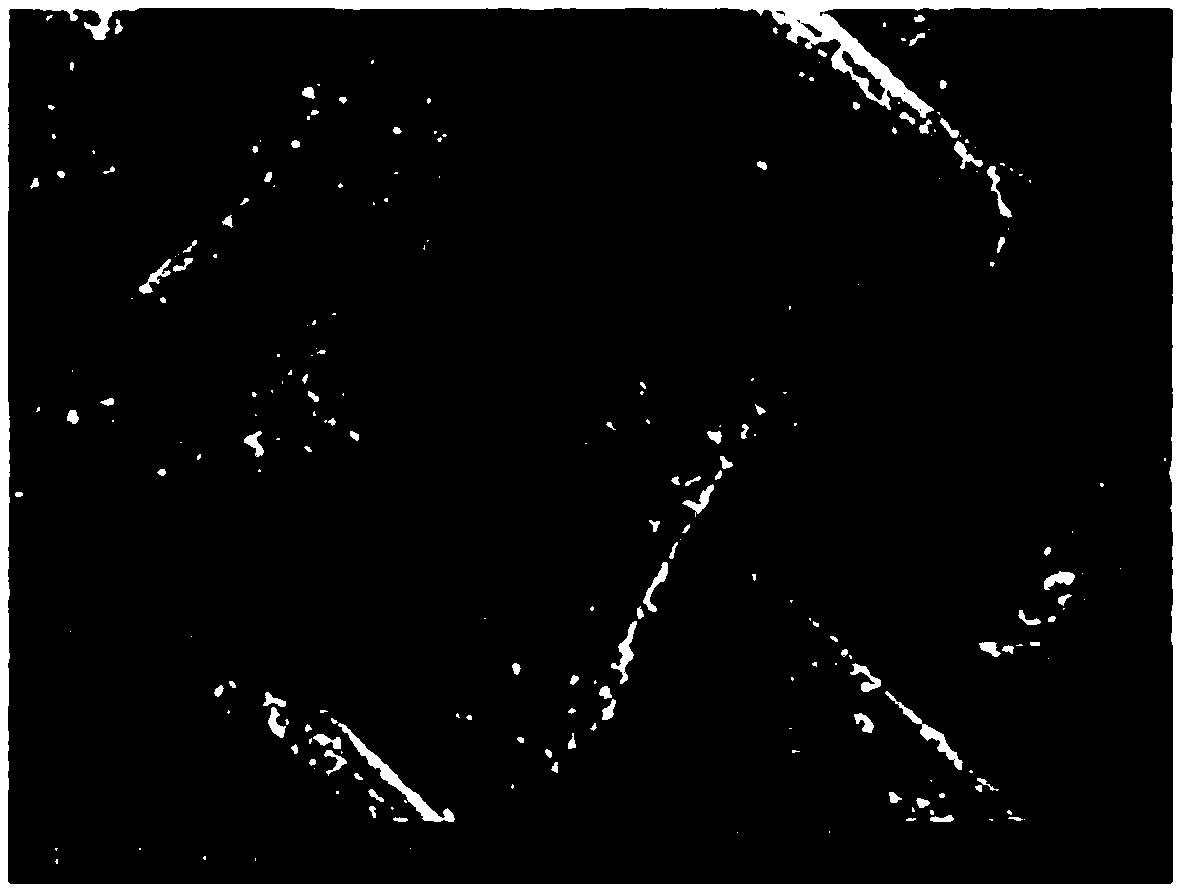Method for manufacturing oil-water separation net with super-hydrophilic underwater super-oleophobic property
A technology of underwater super-oleophobic and oil-water separation mesh, applied in the field of preparation of oil-water separation mesh, can solve the problems of flux attenuation, secondary pollution, poor usability, etc., and achieve simple preparation process, easy cleaning, non-toxic and harmful effect of substance
- Summary
- Abstract
- Description
- Claims
- Application Information
AI Technical Summary
Problems solved by technology
Method used
Image
Examples
Embodiment 1
[0027] (1) Pretreatment of the substrate: ultrasonically clean the 1000-mesh stainless steel mesh in ethanol and deionized water for 10 minutes, then dry it for later use;
[0028] (2) Preparation of reaction solution: Dissolve 0.346g of lanthanum nitrate hexahydrate in 20 ml of deionized water to form a 40 mmol / L lanthanum nitrate solution, then add 10 ml of 0.24 mol / L urea to adjust the pH to 2;
[0029] (3) The preparation process of the film layer: immerse the stainless steel mesh in (1) into the high-pressure reactor added with the reaction solution (2), keep it at 80°C for 20 hours, cool it down to room temperature naturally, take it out and blow dry at 550°C Annealed for 120 min.
Embodiment 2
[0031] (1) Pretreatment of the substrate: Ultrasonic cleaning of 800-mesh stainless steel mesh in ethanol and deionized water for 10 minutes, and then dried for later use;
[0032] (2) Preparation of reaction solution: Dissolve 0.087 g of lanthanum nitrate hexahydrate in 20 ml of deionized water to form a 10 mmol / L lanthanum nitrate solution, then add 10 ml of 0.10 mol / L urea to adjust the pH to 7;
[0033] (3) The preparation process of the film layer: immerse the stainless steel mesh in (1) into the high-pressure reactor added with the reaction solution (2), keep it at 100°C for 12 hours, cool it down to room temperature naturally, take it out and blow dry at 550°C Annealed for 100 min.
Embodiment 3
[0035] (1) Pretreatment of the substrate: ultrasonically clean the 400-mesh stainless steel mesh in ethanol and deionized water for 10 minutes, and then blow dry;
[0036] (2) Preparation of reaction solution: Dissolve 0.130 g of lanthanum nitrate hexahydrate in 20 ml of deionized water to form a 15 mmol / L lanthanum nitrate solution, then add 10 ml of 0.30 mol / L urea to adjust the pH to 3;
[0037] (3) The preparation process of the film layer: immerse the stainless steel mesh in (1) into the high-pressure reactor added with the reaction solution (2), keep it at 160°C for 5 hours, cool it down to room temperature naturally, take it out and dry it, and heat it at 550°C. ℃ annealing for 100 min to prepare lanthanum oxycarbonate (La 2 o 2 CO 3 ) micro-nanostructures (such as image 3 shown), the obtained oil-water separation mesh has a pore size of about 40 μm (as shown in figure 1 with figure 2 shown).
[0038] (4) The prepared oil-water separator has a contact angle of 0...
PUM
 Login to View More
Login to View More Abstract
Description
Claims
Application Information
 Login to View More
Login to View More - R&D
- Intellectual Property
- Life Sciences
- Materials
- Tech Scout
- Unparalleled Data Quality
- Higher Quality Content
- 60% Fewer Hallucinations
Browse by: Latest US Patents, China's latest patents, Technical Efficacy Thesaurus, Application Domain, Technology Topic, Popular Technical Reports.
© 2025 PatSnap. All rights reserved.Legal|Privacy policy|Modern Slavery Act Transparency Statement|Sitemap|About US| Contact US: help@patsnap.com



